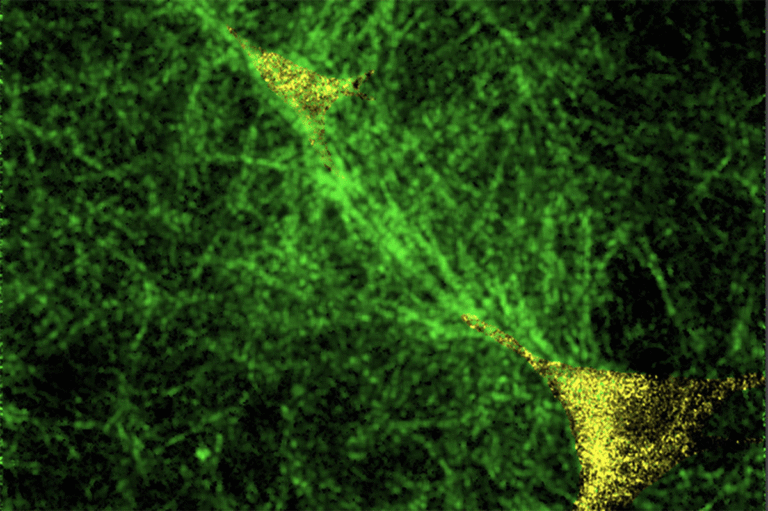Scientists Finally Reveal Why Ammolite Gemstones Shine With Such Vivid Colors

Ammolite gemstones are among the most stunning natural treasures on Earth. Found mainly in Alberta, Canada, these rare, fossilized ammonite shells display an incredible rainbow of colors — from deep reds and greens to bright blues and violets. For decades, scientists have admired their beauty but hadn’t completely understood why ammolite gleams with such brilliance while other shell materials, like abalone or nautilus, show only soft pearly hues.
Now, a new study published in Scientific Reports (2025) has cracked the code. Researchers led by Hiroaki Imai and his team have discovered that ammolite’s vivid colors are the result of nanometer-sized gaps—just four nanometers wide—between layers of aragonite, the mineral that forms the shell’s structure. These perfectly uniform layers reflect light in a way that produces incredibly bright, saturated colors.
The Hidden Structure Behind Ammolite’s Colors
Ammolite is formed from the shells of extinct marine creatures called ammonites, which swam the oceans around 70 million years ago during the Late Cretaceous period. Over millions of years, their shells fossilized while preserving the fine internal layers of nacre, also known as mother-of-pearl.
Nacre is a remarkable natural material made of aragonite plates stacked like tiles, separated by thin layers of organic material (mainly proteins and biopolymers). This structure is responsible for the shimmering effect seen in pearls and shells. But in ammolite, the colors are on a completely different level.
To understand why, Imai’s team used a combination of scanning and transmission electron microscopy, electron backscatter diffraction, focused-ion beam analysis, and optical simulations to peer into ammolite’s structure at the nanoscale. They compared bright ammolite samples from Canada’s Bearpaw Formation to paler nacre found in ammonite fossils from Madagascar, as well as to modern shells of abalone and nautilus.
The comparison revealed that while all these materials share the same general “stacked plate” structure, the key differences lie in how thick the plates are, how large the gaps are between them, and how evenly they are arranged.
What Makes Ammolite So Bright
In the ammolite samples, the aragonite plates were found to be between 140 and 190 nanometers thick, depending on the color observed. Thinner plates (~140 nm) reflected blue, slightly thicker plates (~160 nm) reflected green, and the thickest (~190 nm) reflected red.
But the real secret lies in the tiny four-nanometer gaps between these layers. These gaps act like miniature mirrors, reflecting and amplifying light at specific wavelengths. Because the spacing between the plates and gaps is so uniform, the reflected light waves align neatly and reinforce each other — a phenomenon known as constructive interference.
The result? Intense, pure colors that don’t fade, shift, or blend into white.
In contrast, the nacre from abalone, nautilus, and fossil ammonites from Madagascar had larger or uneven gaps, often filled with leftover organic material. Their layers were also less consistent in thickness. These irregularities scatter light more randomly, creating the softer, less vibrant pearly luster typical of those shells.
The Role of Light and Nanogaps
The study found that ammolite’s brilliant hues stem from the interaction between light and these precise nanogaps. When light strikes the surface, it bounces off each layer of aragonite and the thin gaps between them. The gap’s 4-nanometer width is small enough to produce strong interference effects, while the regular periodic spacing ensures that certain colors are enhanced and others are canceled out.
The researchers ran detailed optical simulations using a computational method called finite-difference time-domain (FDTD) analysis. The models confirmed that reducing gap width to a few nanometers and keeping the layering consistent results in narrower, more intense reflection peaks.
Reflectance spectra of ammolite showed sharp color peaks at 640 nm (red), 540 nm (green), and 460 nm (blue) — the same colors seen by the eye. Other nacre samples showed broader peaks, explaining why their colors appear duller or mixed.
Iridescence and Color Shifts
Like other nacreous materials, ammolite displays iridescence — the color changes slightly when viewed from different angles. However, the study found that this effect is less pronounced than one might expect. That’s because even though the layering in ammolite is extremely regular, it still has some natural imperfections. These minor variations scatter light just enough to soften the color change with angle, giving ammolite its unique, glowing steadiness rather than a harsh “oil-slick” look.
A Window Into Deep Time
One of the most astonishing aspects of the study is how well this nanoscale structure has survived for tens of millions of years. The ammonite shells that became ammolite were buried under layers of sediment and preserved under perfect conditions. In Alberta’s Bearpaw Formation, the fossilization process replaced organic material while keeping the crystalline aragonite layers intact — right down to their tiny gaps.
This means that ammolite is not just a gemstone; it’s also a microscopic time capsule, preserving the intricate biological nanostructures of creatures that lived in the age of dinosaurs.
Beyond Jewelry – Future Applications
The findings have implications that go far beyond gemology. Because ammolite’s colors are structural rather than pigment-based, they don’t fade with time or exposure to light. This makes them a model for developing non-fading paints, coatings, and optical materials.
By mimicking ammolite’s architecture — alternating layers of reflective minerals separated by nanogaps — scientists could design durable, color-stable materials for everything from automotive paints and security features to photonic devices and energy-efficient displays.
In nature, these structures evolved for strength and camouflage, not aesthetics. But as this study shows, evolution’s byproducts can teach us a lot about advanced material design.
What Makes Ammolite Unique in the Gem World
Unlike other nacreous materials, ammolite combines brilliance, rarity, and ancient origin. It’s one of the few biogenic gemstones — formed from the remains of once-living organisms — alongside amber and pearl. Commercial mining of ammolite occurs mostly in southern Alberta, near the town of Lethbridge, where ammonite fossils are found in black shale deposits.
Each piece of ammolite is unique, displaying different color zones depending on the thickness and orientation of the layers. The most prized pieces show all colors of the spectrum across the surface. Because the colors arise from structure, not pigment, they can last indefinitely if protected from mechanical damage.
Gemologists often coat ammolite with a protective resin layer or laminate it onto a backing for jewelry use, since the fossilized shell itself can be delicate.
The Broader Lesson in Nature’s Engineering
Ammolite’s dazzling colors highlight how natural nanostructures can manipulate light in sophisticated ways — far beyond what human technology could easily reproduce until recently. The same principles appear in butterfly wings, beetle shells, and peacock feathers, where tiny periodic patterns create shimmering effects without dyes.
This field of research, known as biomimetic optics, takes inspiration from these natural systems to design human-made materials that use structure instead of pigment to generate color.
The ammolite study stands out because it reveals that even after millions of years of fossilization, these nanoscale features can still work perfectly — reflecting light in a precise and predictable way. That’s not just visually stunning; it’s scientifically profound.
The Takeaway
The discovery by Hiroaki Imai and his colleagues finally explains why ammolite gemstones shine so vividly compared to other nacreous materials. The secret lies in ultra-thin, uniform layers of aragonite separated by 4-nanometer gaps, perfectly tuned to reflect specific wavelengths of light.
It’s a natural masterpiece built at the atomic scale — preserved through geological time — and now decoded through modern science. From its ancient marine origins to its potential use in high-tech coatings, ammolite reminds us how much beauty and innovation can be hidden in the tiniest structures of nature.
Research Reference: Brilliant structural colors originating from reflection by nanogaps of nacreous layers in fossilized ammonite shells (Scientific Reports, 2025)





